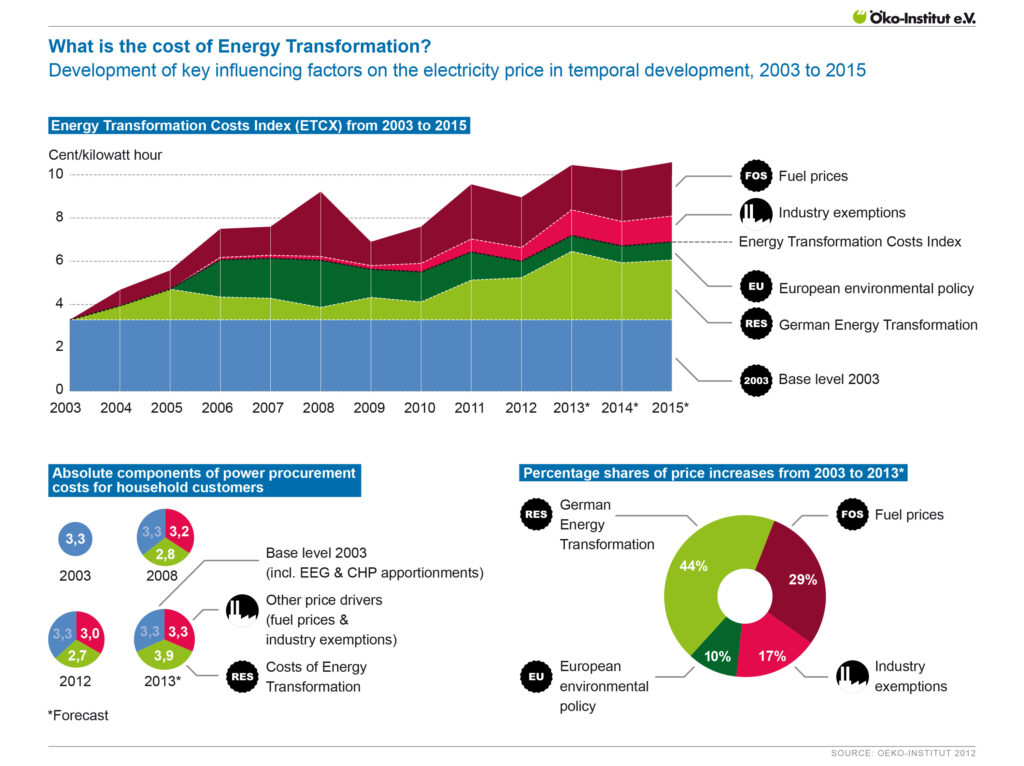How much will renewable energy replace conventional energy this year? Next year? In ten, twenty or more years? Which countries will switch to renewable energy when? To understand how the future may map out, we can build models with Analytica for renewable energy analysis. Our models require inputs, depend on factors – sometimes hundreds of them, and establish relationships between them. Yet we also know that in the real world some energy factors have a greater influence than others, as the following indicates.
Image source: staticflickr.com
Ingredients for renewable energy analysis
The range is potentially vast. Those in search of a starting point can take the well-known (and well-worn?) acronym of PESTLE for political, economic, social, technological, environmental and legal aspects. Branching out to consider competitive offerings multiplies the number of factors further. Technology alone has a few dozen dimensions to offer. Armed with these candidates, the modeling can begin, perhaps with a range of sub-models and influence diagrams to tackle each of the six areas described above.
Energy models and decision making
Clearly, different energy models and assumptions can lead to very different predictions. Various tactics exist to try to compare models, including fixing the definition or the form of different inputs. Whether or not a model is then a good predictor of future events is an open question. The most one can immediately determine is whether results from the different renewable energy models are grouped in a narrow or broad range, and it there are any outlying models (initial suspects for faulty modeling, but innocent until proven guilty). Where data allows, back testing may be possible to see if past events used as input to a model then give a result that is close to the reality of today.
No suitable power grid? Let’s switch anyway
Germany has climate targets to meet in 2020 that in theory require expansion of the transmission grid. HVDC (high voltage direct current) cables are to be installed between the north and the south of the country, but the schedule may be over ambitious compared to the climate target dates. Yet recent renewable energy analysis shows that even without further development of the grid (apart from work already in progress at the end of 2012), Germany can still meet its energy targets. It’ll just cost a bit more, although the extra expenditure will be acceptable.
We said we’d vote for you… But we changed our minds
If technology appears to be less of an issue in Germany, over in the US renewable energy analysis may be driven more by politics. The Michigan voting public expressed a 55 per cent intention to vote for a proposal to require state utilities to derive a quarter of their electricity from renewable sources by 2025. But when it came to the referendum, 62 per cent voted against the proposal. Despite figures showing that new wind-powered electricity is practically half the cost of new coal-fired power plant electricity, the utilities companies financed a political campaign that persuaded voters otherwise.
Coping with real world surprises
The good news for modelers is that Analytica is one of the most flexible modeling applications available. If situations change, models can be rapidly adjusted and refined for a renewable energy analysis that is updated with the latest input. If you’d like to know how Analytica, the modeling software from Lumina, can help you build realistic models and keep them aligned with the real world, then try a free evaluation of Analytica to see what it can do for you.







